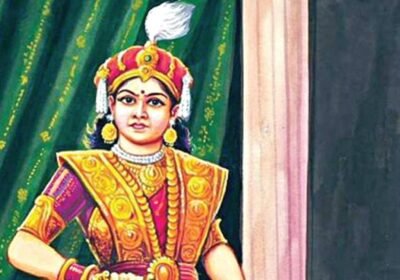The History of Vandalur Zoo (Arignar Anna Zoological Park)
The History of Vandalur Zoo
Arignar Anna Zoological Park, commonly known as Vandalur Zoo, is one of the largest zoological parks in India. Located near Vandalur, a suburb of Chennai in Tamil Nadu, the zoo covers an area of approximately 1,265 acres. Its establishment is a testament to the growing interest in wildlife conservation and education in India. This essay delves into the history, development, and significance of Vandalur Zoo, exploring its evolution from inception to its current status as a prominent conservation and educational institution.
Early Beginnings
The origins of Vandalur Zoo can be traced back to the early 20th century. The Madras Zoo, established in 1855 at the Chennai (then Madras) Fort, was the first zoological garden in India. However, by the late 19th and early 20th centuries, the need for a larger and more comprehensive facility became apparent. The original zoo faced significant challenges, including limited space, inadequate facilities, and issues related to animal welfare.
Recognizing these challenges, the government of Tamil Nadu proposed the establishment of a new zoo in the Vandalur area. The site was selected due to its natural landscape, which included hills, forests, and a variety of flora and fauna, providing a more suitable habitat for the animals.
Establishment of the Zoo
The Vandalur Zoo was officially established in 1985, although planning and development began several years earlier. The park was inaugurated by the then Chief Minister of Tamil Nadu, M. Karunanidhi, on July 8, 1985. The zoo was named in honor of Arignar Anna, a revered political leader and social reformer in Tamil Nadu, known for his contributions to education and social justice.
From the outset, the Vandalur Zoo was designed with a focus on conservation and education. It aimed to provide a more natural habitat for animals compared to the traditional cages found in many zoos. This shift in approach was part of a broader movement in wildlife management, emphasizing the importance of conservation and the ethical treatment of animals.
Growth and Development
In its early years, Vandalur Zoo faced several challenges, including funding, infrastructure development, and public awareness. However, over time, the park began to flourish. It expanded its animal collection, which included various species of mammals, birds, reptiles, and amphibians. The zoo became a sanctuary for many endangered species, participating in breeding programs and conservation efforts.
One of the notable features of Vandalur Zoo is its emphasis on creating naturalistic enclosures that mimic the animals’ habitats. This design philosophy promotes the physical and psychological well-being of the animals, allowing them to exhibit more natural behaviors.
The zoo has also made significant strides in educational outreach. It regularly conducts awareness programs, workshops, and educational tours for students and the general public. These initiatives aim to promote wildlife conservation and environmental awareness, particularly among the youth.
Conservation Efforts
Vandalur Zoo plays a critical role in wildlife conservation. It is involved in several initiatives aimed at protecting endangered species, including the Indian Gaur, the Bengal Tiger, and various species of deer and birds. The zoo participates in the Species Recovery Program, which focuses on breeding and reintroducing endangered species into their natural habitats.
The zoo also collaborates with various national and international wildlife organizations to conduct research and conservation activities. These partnerships have strengthened the zoo’s capacity to contribute to global conservation efforts and share knowledge and resources.
Modernization and Facilities
In recent years, Vandalur Zoo has undergone significant modernization. New facilities have been developed, including improved animal enclosures, visitor amenities, and educational centers. The zoo has also introduced technological advancements, such as digital information boards and interactive exhibits, to enhance the visitor experience.
The Vandalur Zoo has established a veterinary hospital to provide medical care to the animals. This facility is equipped with advanced diagnostic and treatment tools, ensuring that the health and well-being of the animals are prioritized.
Visitor Experience and Public Engagement
Today, Vandalur Zoo is a popular destination for both locals and tourists. It attracts hundreds of thousands of visitors annually, making it one of the most visited zoos in India. The zoo offers a range of attractions, including safari rides, bird watching, and educational programs.
Special events, such as wildlife photography competitions, awareness campaigns, and conservation workshops, are regularly organized to engage the public. The zoo’s efforts in promoting sustainable practices and conservation education resonate with the community, fostering a sense of responsibility towards wildlife protection.
Challenges and Future Directions
Despite its successes, Vandalur Zoo faces several challenges. Issues related to habitat loss, climate change, and human-wildlife conflict continue to threaten many species. The zoo must adapt its conservation strategies to address these evolving challenges.
Furthermore, the increasing number of visitors poses challenges for maintaining the natural environment and ensuring that animal welfare remains a priority. Balancing public engagement with conservation efforts is essential for the zoo’s future.
To tackle these challenges, Vandalur Zoo is focusing on enhancing its conservation programs, improving infrastructure, and expanding educational outreach. The aim is to create a sustainable model that not only protects wildlife but also educates the public about the importance of biodiversity.
Vandalur Zoo, or Arignar Anna Zoological Park, has come a long way since its establishment in 1985. From its humble beginnings as a sanctuary for wildlife to becoming a leader in conservation and education, the zoo has made significant contributions to wildlife protection in India. Through its ongoing efforts in conservation, public engagement, and education, Vandalur Zoo continues to play a vital role in fostering a deeper understanding of wildlife and the importance of preserving our natural heritage.









